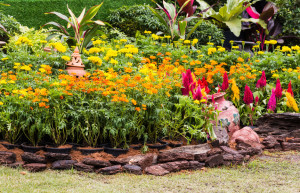Reducing Labor and Increasing Wildlife Means Identifying Plants That Are Indigenous
 Today, more plants are being bred to avoid many of the problems common to “introduced” species. You can find many plant varieties that have been engineered to be pest or disease resistant. However, it is still a good idea to use plants that are native to your own region. Identifying plants that are indigenous is a great way to reduce your workload and attract wildlife that brings benefits to your garden.
Today, more plants are being bred to avoid many of the problems common to “introduced” species. You can find many plant varieties that have been engineered to be pest or disease resistant. However, it is still a good idea to use plants that are native to your own region. Identifying plants that are indigenous is a great way to reduce your workload and attract wildlife that brings benefits to your garden.
Non-native Plants Require More Hands On
Plants that are from outside your growing region will more than likely require more water, more fertilizer and more attention during harsh winter or humid summer months. Even when planting those varieties which have been successfully introduced into your area, be sure to ask the nursery if the plants were actually grown in your region. Otherwise they may still have extra needs in terms of protection, enriching and general care.
Non-native Plants do Not Have Natural Checks/Balances
Another problem that can arise with “introduced” plants is that of overtaking an area. Your non-native plant won’t have natural predators to keep it in check. This means that if the plant doesn’t take added resources to maintain it very well could flourish to the point of becoming intrusive and overrunning your other plantings.
Native Plants Attract Desirable Wildlife
Native plants will attract birds, butterflies, bees and other desirable wildlife. By choosing to utilize plants known and recognized by the local wildlife you cooperate with the established order and will be supporting the ecosystem. When you plant with native species everything works together in harmony. And you enjoy the pleasure of natural pollinators.
Another part of identifying plants that are native for your garden is making sure that each variety is labeled. At Kincaid Plant Markers we produce sturdy, attractive labels that will draw attention to your plants and make your garden a pattern for others to follow. Order a set today and see how easy it can be to “go native”!
